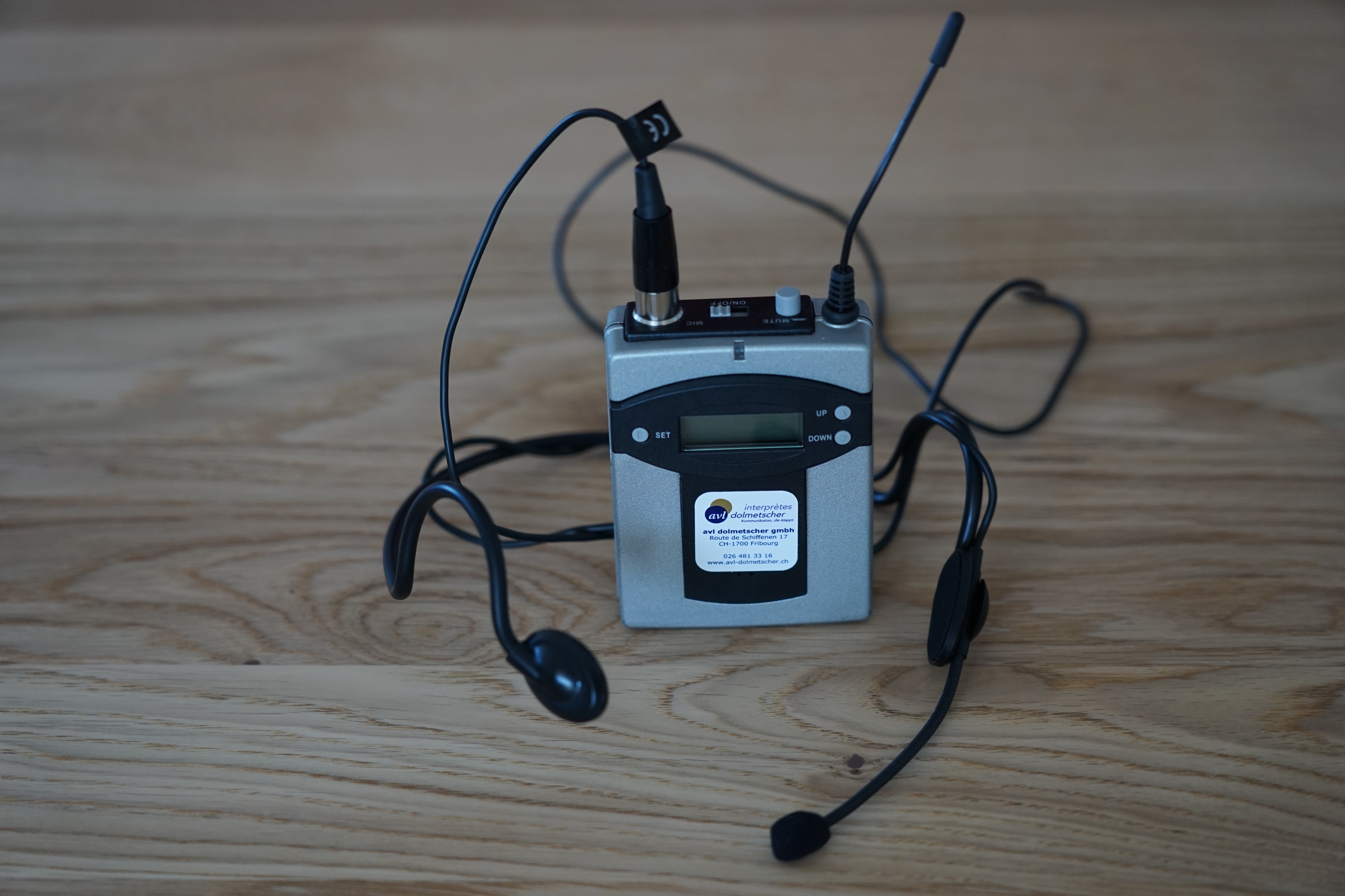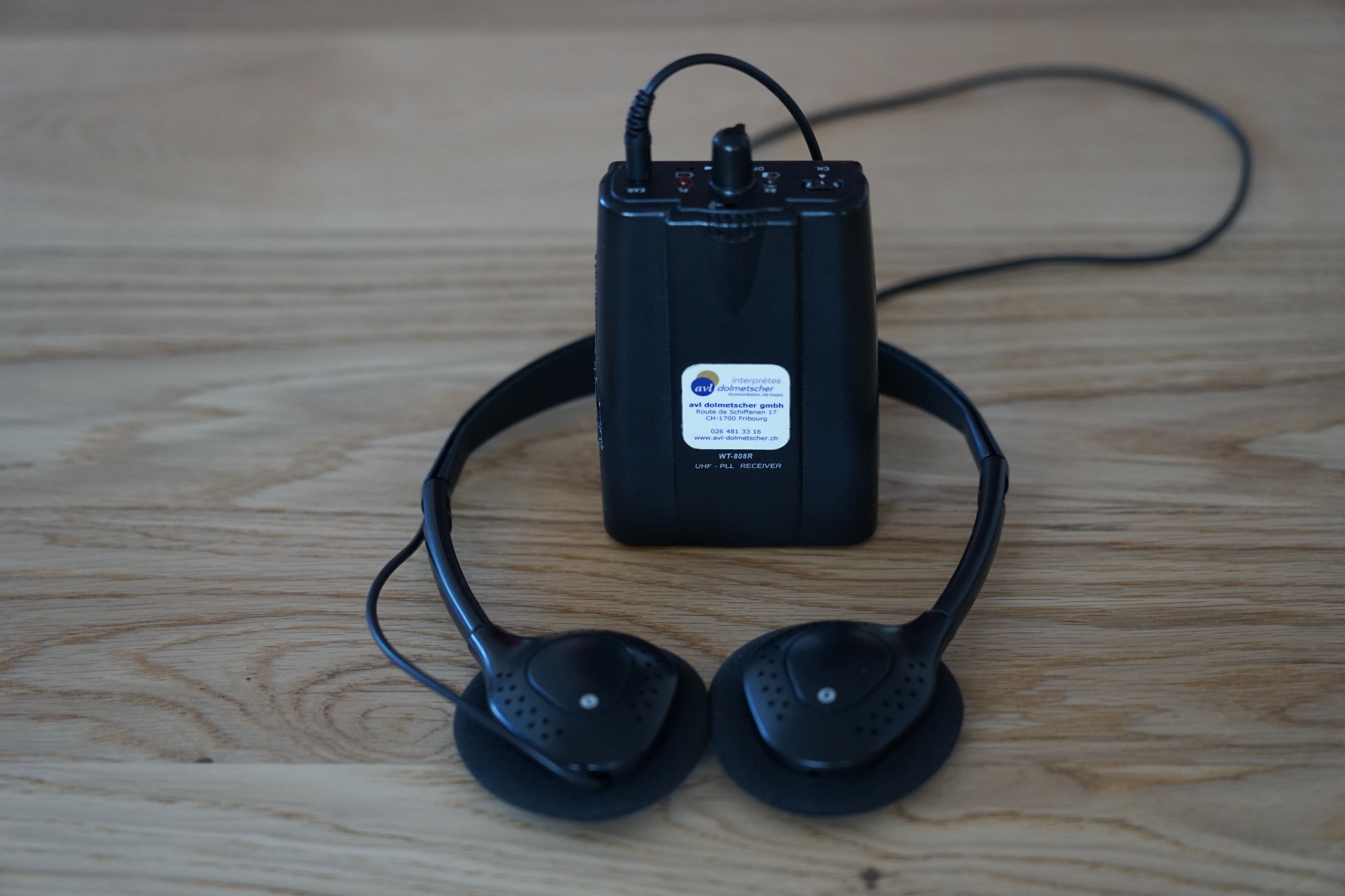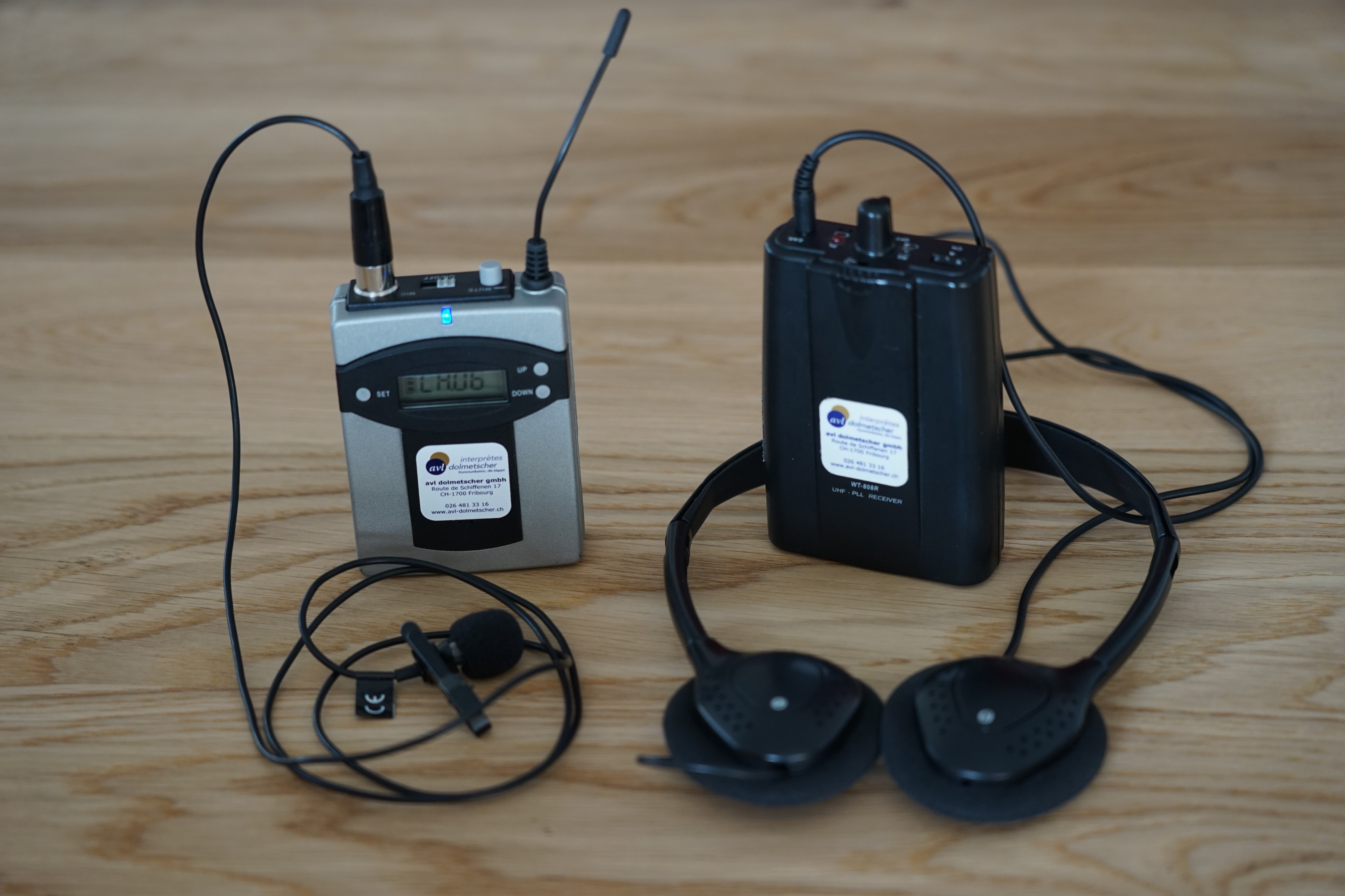The whispering system (also called "wirelesse portable system”, “bidule", "tour-guide system") for chuchotage, is mainly used for small meetings, training courses or guided tours at trade fairs, in museums or factories.
It consists of the following three components:
- Transmitter
- Headphones
- In-ear set
The whispering system is transported in a box with 32 charging slots, of which up to four slots are reserved for transmitters.

Transmitter for the interpreters
The transmitter includes a headset microphone. The interpreters use this microphone to convey what is being said to the foreign-language audience.

Headphones for the audience
The unit consists of a headset and a receiver. To hear the interpretation, the desired language channel must be selected. Tip: those who prefer to use their own headphones can plug into the 3.5 mm jack on the receiver.

In-ear set for the speakers and interpreters
The in-ear set consists of a tie-clip or headset microphone and a transmitter for the speaker (left side). On the other hand, the set includes one headphone and receiver per interpreter (right side). This enables the interpreters to hear the sound directly in their ears, even at a distance of up to 30 metres.
Improve sound quality and intelligibility
The in-ear set (Fig. 2) ensures that the interpreters can hear the speakers correctly at all times, even if the acoustics in the hall are poor or there is a lot of background noise.
Practical situations, tips & tricks
The in-ear set is particularly suitable for longer presentations by a single person, where the microphone does not have to be constantly passed on and new presenters "wired up". If this does not suit your setting, you will find some tips and tricks below on how to adapt the system.
Lectern with gooseneck microphone: attach the tie-clip microphone to the gooseneck microphone.
Loudspeaker system with microphones in the hall: place or hang the tie-clip microphone in front of the loudspeaker.
Handheld microphone (also called handheld transmitter): order a handheld transmitter instead of the tie-clip microphone and fix it firmly to the hall microphone so that there is no slippage.
Small group discussions: place the tie microphone on a table or on a stand between the panel members.
To avoid disruption
- The distance between transmitter and receiver must be less than 30 metres
- Do not place transmitters next to each other (at least 1.5 metres apart)
- Never switch on more than 1 transmitter at the same time on the same channel
- Avoid heavy objects or partitions between transmitters and receivers
- Do not cover the transmitter with clothing
- Do not wear the transmitter on your back
If you still experience unexplained interference, switch channels until you have found one on which the sound is being correctly transmitted.
 +41 62 772 44 33
+41 62 772 44 33 info
info